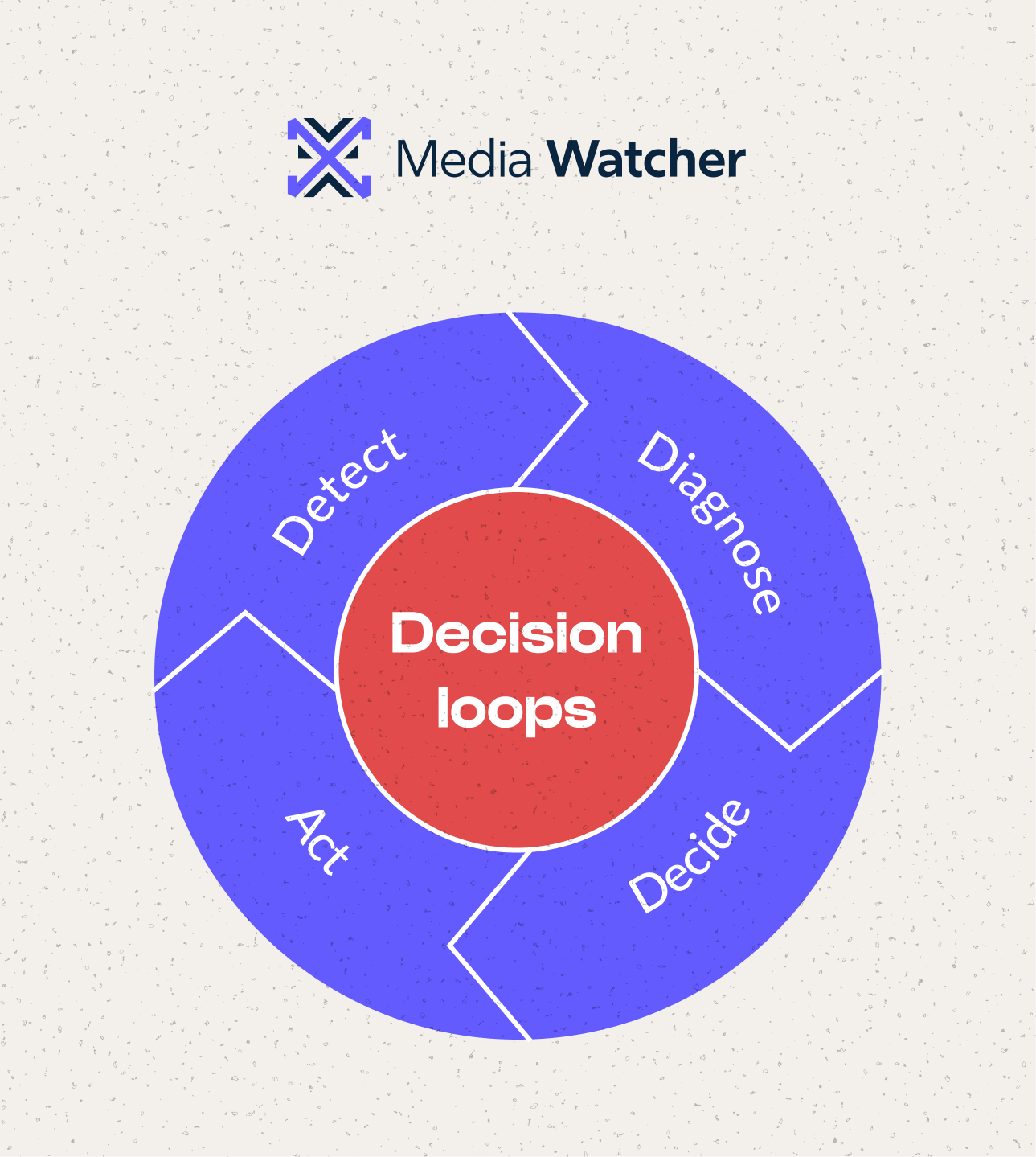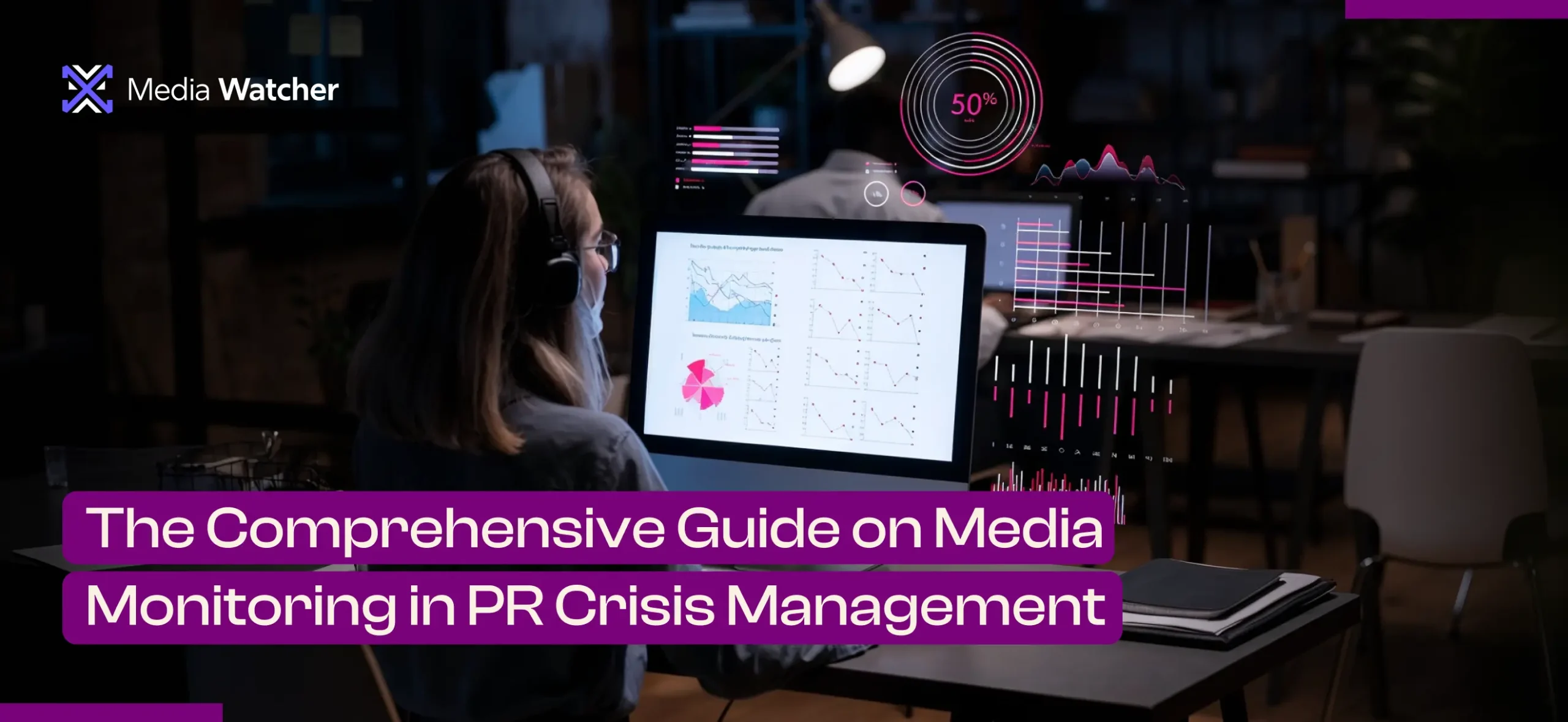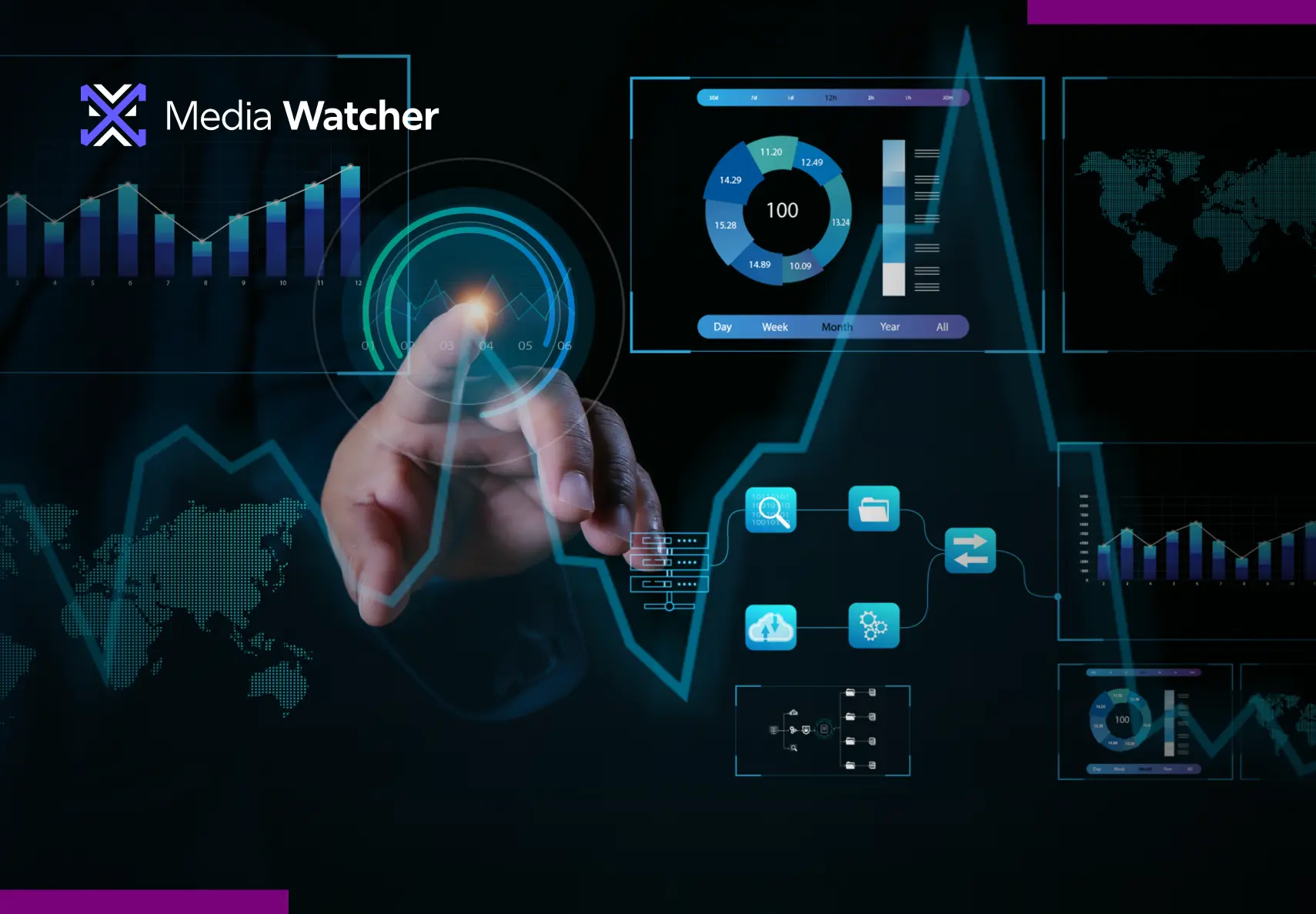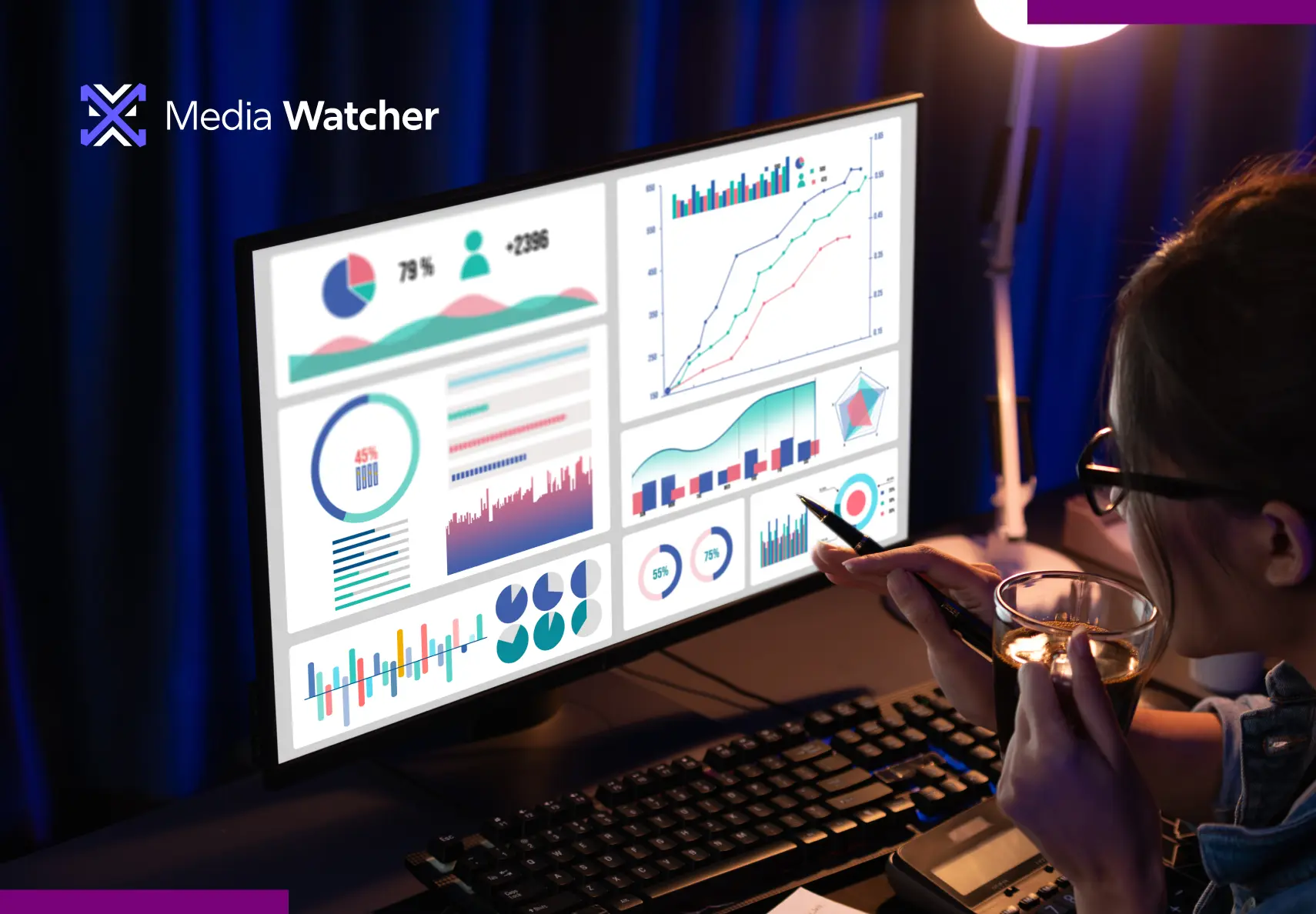Did you know?
In the first hours of a PR crisis, organizations rarely suffer from a lack of data, they face information chaos.
As mentions increase, narratives become scattered across different platforms, and sentiment shifts almost instantly. The problem is not data collection, it’s making sense of fragmented, fast-changing signals across platforms.
When a crisis hits, the financial impact is immediate: companies typically see a 35.2% drop in share price, according to Crisis Index 300 data.
Conventional monitoring systems tend to inundate employees with notifications and communications. These notifications often overwhelm teams because they lack prioritization, mix low-risk mentions with critical alerts, and provide no context.
Crisis management in the present day is not merely a matter of pulling information together. It requires interpretation. This is where data visualization redefines crisis response. Real-time dashboards, heatmaps, and influence maps distill thousands of signals into clarity. Monitoring tells what is happening; visualization shows what matters.
In today’s high-velocity media landscape, visualization isn’t just an enhancement; it’s the core decision-support layer powering faster and more coordinated crisis management.
How Media Monitoring Evolved Into a Decision Engine?
Traditional media monitoring tools are often reactive. They mainly alert users about increases in mentions or changes in sentiment after these events happen.
Modern media intelligence solutions enhance monitoring by integrating it into a proactive decision-making process. They show how information spreads, highlighting what is happening, how it circulates, and which important voices are shaping the story.
At the heart of this approach is a clear decision loop: detect early signals, interpret narrative shifts, decide on a response, and evaluate impact.

The processes are accelerated through visualization, which is represented via dashboards rather than lengthy reports. These dashboards present real-time insights that decision-makers can act on instantly.
For example, a sudden drop in sentiment on a dashboard may trigger an immediate crisis response meeting. This helps teams respond faster and more strategically than they would have responded with traditional alerts.
Therefore, this enables organizations to react fast, precisely, and reliably by transforming the raw data into decision-making tools.
Designing Dashboards for Action and Cross-Functional Clarity
A crisis dashboard is beyond charts, it’s a strategic tool. Crisis teams think like strategists, not data collectors, when designing dashboards. The dashboards are designed to prioritize speed, clarity, and actionable insight through:
- One-screen rule: All critical insights should fit on a single interface.
- Visual hierarchy: Urgent metrics, like real-time sentiment or spikes in mentions, appear at the top; trend deltas and historical comparisons follow.
- Cognitive flow: In most crisis workflows, heatmaps come first to show scope, followed by timelines to identify acceleration, and sources last to reveal causality.
Moreover, there are key visuals that drive decision-making, including:
- Velocity line charts show how fast negative narratives are spreading.
- Influence clusters map voices shaping perception.
- Sentiment delta heatmaps reveal platform-specific changes in intensity.
- Response performance gauges track the impact of official communications.
These dashboards provide a unified view across all departments. This further enables PR, Legal, Operations, and the C-suite to work together on a single narrative to help reduce miscommunication.
Executives need decision visuals: risk quadrants, stakeholder influence maps, and channel trust metrics. Visualization democratizes crisis intelligence by ensuring everyone works from the same verified data, metrics, and narrative indicators.
How Post-Crisis Insights Help From Data to Recovery?
Once the immediate spike in mentions stabilizes, dashboards shift focus from damage control to reputation recovery. Crisis KPIs like response time and negativity ratio give way to trust metrics, such as positive sentiment growth, share of voice in earned media, and influencer alignment.
This long-term monitoring enables teams to measure the effectiveness of recovery efforts and identify where perceptions are improving or lagging. Crisis teams can then adjust communications accordingly.
Organizations evolve from reactive responders into resilient brands by using post-crisis visual intelligence. They can also turn crisis insights into actionable strategies for a stronger reputation and stakeholder confidence.
How Real Time Monitoring Transformed a Crisis Response?
Let’s consider a pseudo-case, where a major airline faced a sudden service backlash. Social media users posted videos about delays, yet no hashtags were trending. The crisis team saw an increase in video sharing three hours before the story became widely known. This was possible because of a real-time monitoring dashboard.
Visualization enabled the team to understand trends in velocity, the reach of influencers, and sentiment at a glance, and to respond proactively. The narrative deteriorated as they immediately released an apology video about the concerns.
This example illustrates how data-driven visualization transforms monitoring into actionable decision-making, showing that timing and context are as critical as the message itself. Early identification enables the organizations to manage the story and reduce reputational damage.
AI’s Role in Crisis Visualization for Media Monitoring in PR Crisis Management
Artificial intelligence has emerged as an underlying service in contemporary media intelligence systems that alters the manner in which organizations decipher rapidly moving stories during a PR crisis.
With the assistance of machine learning, teams can sort new stories in question, identify coordinated attacks, and anticipate rapid shifts in sentiment before they turn into a crisis. AI detects anomalies by analyzing unusual spikes in posting patterns, sudden narrative shifts, repeated bot-like activity, or synchronized messages across platforms.
This elevates a media monitoring solution for PR crisis from reactive alerting to proactive decision support. Predictive analytics provide brands with hours of foresight, which is essential in strategic crisis management and controlled response management.
What Metrics Matter in Media Monitoring for PR Crisis Response?
Effective PR crisis management relies on metrics that reveal narrative speed, influence, and reputational risk. For instance, the metrics that reflect narrative velocity and influence, as well as reputational impact. The major indicators include time-to-detection (TTD) and negative acceleration rate, along with cross-platform spread index and influencer risk score.
Media intelligence in PR crisis scenarios also benefits from monitoring the misinformation reproduction rate (MRR) and message alignment between official statements and public reaction.
When integrated into media monitoring tools or media monitoring services for PR crises, these metrics enable teams to quantify impact, prioritize actions, and make informed, high-speed decisions.
The Human and Operational Layer in Media Intelligence for PR Crisis Management
While dashboards and AI provide clarity, the human layer ultimately drives execution in a PR crisis. Crisis teams rely on structured workflows such as war-room coordination, along with daily situation stand-ups and escalation protocols tied to dashboard thresholds.
Media intelligence solutions facilitate cross-functional alignment by ensuring PR, Legal, Customer Support, and leadership operate from a shared truth. This operational layer turns media monitoring into an active command system by linking dashboards with escalation rules, cross-team workflows, and real-time decision checkpoints.
Organizations make decisions more quickly, consistently, and minimize reputational losses through coordinated decision-making.
Cross-Platform Fragmentation Challenges in Media Monitoring During PR Crisis
Modern crises play out within fragmented digital ecosystems. Platforms like TikTok, Reddit, X, YouTube, news blogs, and encrypted messaging apps create unique emotional atmospheres and inconsistent narrative tempos. Each creates different emotional dynamics and narrative speeds. For example, TikTok trends surge within minutes, while Reddit discussions build more slowly and analytically.
This fragmentation creates blind spots when organizations rely on data from a single source. Media monitoring tools must unify these parallel signals into one cohesive view. Media intelligence in PR crisis scenarios depends on dashboards that aggregate sentiment, velocity, and influence from every platform.
By consolidating dispersed narratives, teams avoid misinterpretation and ensure strategic crisis management rooted in complete, real-time visibility.
Strengthen Your Crisis Management With Media Watcher’s Intelligence Solutions
Media Watcher helps teams move beyond reactive monitoring to an effective real-time crisis response.
It transforms scattered media signals into easily understandable and actionable insights through AI-driven recommendations, cross-platform visibility, and intuitive dashboards. Detect new risks earlier, understand sentiment shifts in real time, and coordinate action with confidence.
Media Watcher provides the speed, accuracy, and clarity needed to safeguard your reputation when it matters most. Schedule a Free Demo today!




